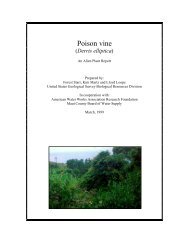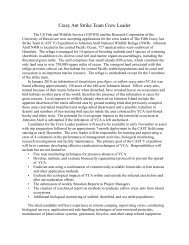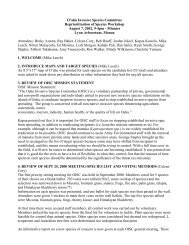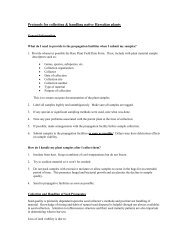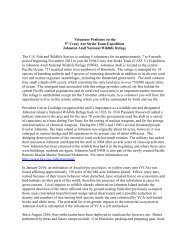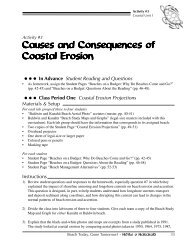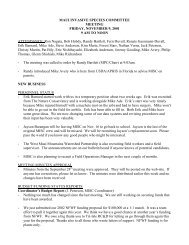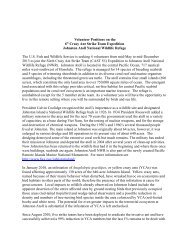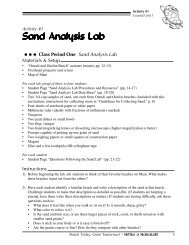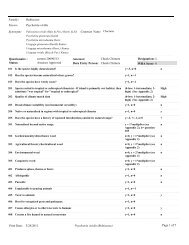Coastal - Hawaiian Ecosystems at Risk project
Coastal - Hawaiian Ecosystems at Risk project
Coastal - Hawaiian Ecosystems at Risk project
You also want an ePaper? Increase the reach of your titles
YUMPU automatically turns print PDFs into web optimized ePapers that Google loves.
Acet<strong>at</strong>e #9<br />
Activity #1<br />
<strong>Coastal</strong> Unit 3<br />
Acet<strong>at</strong>e Master<br />
Mystery #6<br />
Theories about isol<strong>at</strong>ion<br />
and speci<strong>at</strong>ion hold th<strong>at</strong><br />
shrimp species th<strong>at</strong> live<br />
thousands of miles apart<br />
should have evolved into<br />
separ<strong>at</strong>e species. Wh<strong>at</strong><br />
can explain the fact th<strong>at</strong><br />
popul<strong>at</strong>ions of the same<br />
shrimp species are found<br />
thousands of miles apart?<br />
Observ<strong>at</strong>ion #1<br />
Observ<strong>at</strong>ion #2.<br />
Observ<strong>at</strong>ion #3<br />
Observ<strong>at</strong>ion #4<br />
Observ<strong>at</strong>ion #5<br />
Photo: John Hoover, Hawaiÿi’s Sea Cre<strong>at</strong>ures, Mutual Publishing<br />
The shrimp Antecaridina lauensis (Al), Halocaridina rubra (Hr), and<br />
Metabetaeus lohena (Ml) can live up to 5 years in aquariums. They live longer<br />
than other types of small shrimp.<br />
All of the small, red shrimp found in the anchialine ponds can toler<strong>at</strong>e a wide<br />
vari<strong>at</strong>ion in “salinity” (saltiness of the w<strong>at</strong>er), but they must have a little bit of<br />
seaw<strong>at</strong>er in the mix. They can live in pure ocean w<strong>at</strong>er.<br />
All these shrimp need dark, underground crevices. While human beings have<br />
mostly seen them in the ponds, the shrimp probably do not need to come into<br />
ponds. While Ligur uveae (Lu) is found in ponds in other parts of the world, it<br />
has never been seen in a pond in Hawaiÿi. Here, it has been seen by divers only<br />
in underw<strong>at</strong>er caves. While we tend to associ<strong>at</strong>e the shrimp with anchialine<br />
ponds, it is possible th<strong>at</strong> they do not need to live in or on “emergent land” (land<br />
th<strong>at</strong> comes out of the w<strong>at</strong>er, an island).<br />
On islands where popul<strong>at</strong>ions of the shrimp have been found in anchialine<br />
ponds, the shrimp sometimes show up in new holes in the ground such as a<br />
bomb cr<strong>at</strong>er, wells, and quarries, as well as in ponds in recent lava flows. This<br />
suggests th<strong>at</strong> they have migr<strong>at</strong>ed through underground crevices to enter these<br />
new holes, so there is probably an extensive underground popul<strong>at</strong>ion.<br />
Only two of the many species of small, red shrimp are endemic to an area.<br />
Since isol<strong>at</strong>ion generally results in the evolution of new species, this seems to<br />
indic<strong>at</strong>e th<strong>at</strong> larvae are passively flo<strong>at</strong>ing in currents between these various<br />
areas. But in many places the currents don’t go the right way!<br />
Anchialine Detectives • Höÿike o Haleakalä 19





